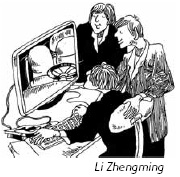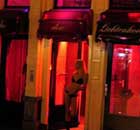Opinion
GM's natty LaCrosse tribute to Chinese design
By Hong Liang (China Daily)
Updated: 2009-11-07 08:30

The commercial success of General Motors' Buick LaCrosse in the Chinese and US markets has greatly boosted Shanghai's bid to be an automotive design center with the capability of conceiving cars that win the hearts of critics and consumers around the world.
Distinguished by an entirely new body inside and out, the 2010 LaCrosse, which made its market debut last month, was largely designed and engineered in the Shanghai studio of Pan Asia Technical Automotive Center, one of the two joint ventures between GM and Shanghai Automotive Industry Corp. The partners have another joint venture in Shanghai for manufacturing.
The LaCrosse project was led by Cao Min, who was responsible for the exterior, and Liu Nenghua, for the interior, according to New York Times, which carried a glowing review of the car bearing a nameplate that US motorists have learned to deride. Unsurprisingly, GM has been selling more cars, many of them Buicks, in China than in the US since 2006.
In sharp contrast to the staid and uninspiring Buicks of yesteryears, the new model sports a thoroughly clean and modern look that is said to be a blend of the marque's heritage and Chinese design cues, purportedly derived from the yuanbao, an oval-shaped silver ingot that was the common currency in ancient China.
Oh yes, the potholes, a signature of the marque, are there. But they have been moved to the bonnet so as not to disrupt the smooth body flow of the new design.

Derived from the Chinese theme of "earth and water," the interior of the 2010 LaCrosse is devoid of any hard or aggressive form. The New York Times tester made special mention of what he described as "jade-like material" in the back-lit surfaces included by the Chinese designers as a recognition of their fellow countrymen's love of the stone.
Car enthusiasts in the United States and China have warmed to the novel design concept of the new LaCrosse. Initial sales of the 2010 model are reported to be brisk in both markets.
This should be heartening news to the Chinese auto industry, which has always been seen to be long on manufacturing capability but short on design and engineering.
Instead of nurturing a domestic design talent pool, many Chinese automakers seem to consider the acquisition of foreign brands, together with their design and brand value, as the quickest way to boost their domestic market shares and gain entry to overseas markets. But this business strategy, exemplified by a few highly publicized acquisitions, hasn't produced notable results.
In this hotly contested marketplace, car manufacturers are competing for the attention of jaded motorists with striking designs and brand appeal. Domestic car manufacturers must recognize that dull cars don't sell even with a price advantage. It's now made obvious by the LaCrosse project that Chinese designers and engineers have the capability to create appealing shapes and functional forms to wow the public.
All it will take is some bold thinking and decisive action on the part of the manufacturers to break into the global marketplace.
E-mail: jamesleung@chinadaily.com.cn













